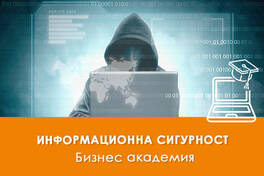Malicious hackers are constantly inventing new and sophisticated methods to trick users into providing personal or financial data.
The Modern Threats of Spam and Phishing Emails training aims to provide the detailed knowledge and practical skills needed to recognise, prevent and respond effectively to spam and phishing attacks.
Participants will be introduced to the current techniques and methods that malicious actors use, as well as best practices for protecting personal and corporate information.
In the training, you will learn how to identify suspicious email addresses and messages, how to analyze links and attachments in emails, how to implement best practices to protect your email and operating system, how to prevent online attacks, and how to act quickly and effectively after an attack to minimize damage.
The training will not only provide you with technical knowledge, but also help you develop critical thinking and awareness of modern cyber threats. With these skills, you will be better prepared to deal with the threats you face in the online world.
Content of the training
- Basics of spam and phishing
- Definition and history of spam and phishing
- How do spam and phishing work?
- Different types of spam and phishing attacks
- Measuring the volume and impact of spam and phishing
- Spam and phishing email detection
- Recognition of inappropriate or suspicious email addresses and domains
- Recognition of fraudulent messages and requests for personal information
- Link analysis: best practices
- Detect suspicious attachments
- Prevention and protection
- Email protection and security settings
- Spam and phishing protection software
- Training and awareness: the key to protection
- Notification of spam and phishing emails
- Emergent threats and trends
- Using AI and Machine Learning for spam and phishing attacks
- Unprecedented threats: phishing attacks and "Crypto" phishing
- Threats related to COVID-19 and other current events
- Future trends in spam and phishing
- Practical scenarios and examples
- Analysis of real spam and phishing attacks
- Actions after a spam or phishing attack
- Self-study exercises and tests
How do you complete the training?
When a learner signs up for the course, they are given a personal account to access the training. It is taken online, at a time and place convenient to the user.
If you are interested in our services or have further questions, please contact us at +359 878 685 304 or e-mail: office@nitbg.com.





